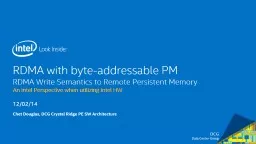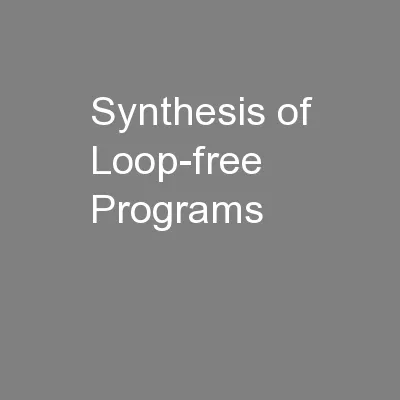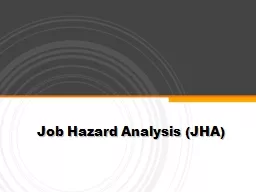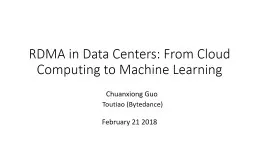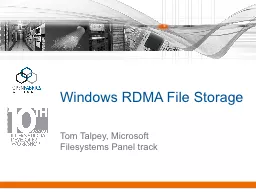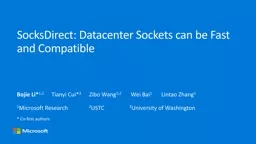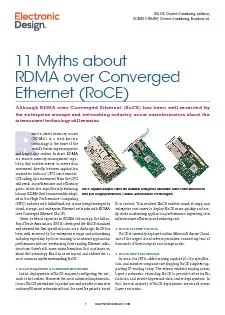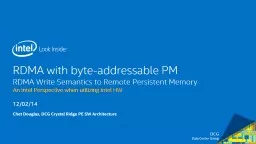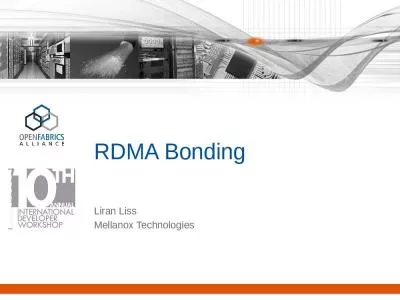PPT-RDMA and Clouds Saurabh Jha, Shivam Bharuka and Bhopesh Bassi
Author : lois-ondreau | Published Date : 2018-09-30
What is RDMA Remote Direct Memory Access to move buffers between two applications across a network Direct memory access from the memory of one computer into that
Presentation Embed Code
Download Presentation
Download Presentation The PPT/PDF document "RDMA and Clouds Saurabh Jha, Shivam Bhar..." is the property of its rightful owner. Permission is granted to download and print the materials on this website for personal, non-commercial use only, and to display it on your personal computer provided you do not modify the materials and that you retain all copyright notices contained in the materials. By downloading content from our website, you accept the terms of this agreement.
RDMA and Clouds Saurabh Jha, Shivam Bharuka and Bhopesh Bassi: Transcript
Download Rules Of Document
"RDMA and Clouds Saurabh Jha, Shivam Bharuka and Bhopesh Bassi"The content belongs to its owner. You may download and print it for personal use, without modification, and keep all copyright notices. By downloading, you agree to these terms.
Related Documents


